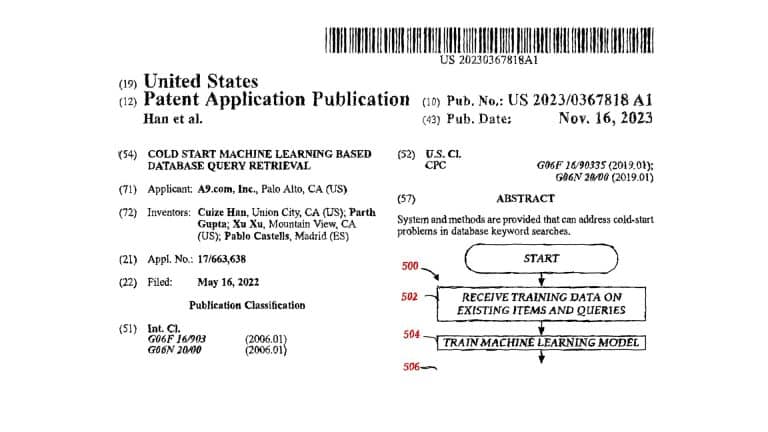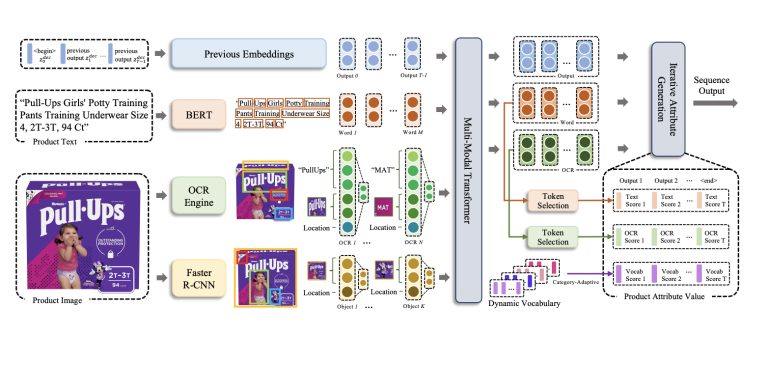Have you ever used a search engine like Google or shopped on a site like Amazon and wondered how it manages to show you such relevant results? You may be searching for something very specific, yet the search engine somehow understands your intent and returns exactly what you need.
This is thanks to some sophisticated technology under the hood known as semantic matching. In this post, we’ll demystify what semantic matching is, why it’s important, and how it powers many of our everyday interactions with technology.
What is Semantic Matching?
Semantic matching refers to searching by meaning and context, not just matching keywords. It uses artificial intelligence (AI) to deeply analyse the intent behind search queries and content.
For example, if you search for “sneakers,” an Amazon A9 algorithm understands you want shoes for sports or casual wear. It won’t just literally match the word “sneakers.” This is important because there are many different ways people search for the same thing using different words or phrases.
Semantic matching allows Amazon’s search algorithm, voice assistants, chatbots, and other applications to understand language naturally and match meaning. It goes beyond just scanning for keywords to look at the full context.
Challenges of Traditional Keyword Search
Traditional search engines rely heavily on keywords. They index websites and content based on the words that appear on the page. When you search for something, they look for literal word matches related to your query.
This works well in some cases but has significant limitations:
- It fails to understand synonyms. Searching for “car” won’t match pages about “automobiles.”
- It struggles with different word forms. Searching for “dogs” won’t necessarily find pages about “dog training.”
- It is very sensitive to spelling errors and typos. One wrong letter means no results.
- It doesn’t understand context or intent. Searching for “apple” could mean the fruit or the company.
Semantic matching aims to overcome these keyword limitations to improve Amazon product search accuracy and relevance.
How Semantic Matching Works
Semantic matching systems use machine learning and neural networks to develop a deeper understanding of language. By analysing enormous datasets, they learn the relationships between words and how to match based on meaning.
These systems convert words into numerical representations called vectors or embeddings. Words with similar meanings have similar vectors. This allows the system to mathematically determine semantic similarity.
For example, “car” and “automobile” would have very close vector representations, even though they are different words. The system learns these relationships by seeing how words are used in context across millions or billions of web pages, documents, and searches.
When you enter a product search query on Amazon, the A9 algorithm analyzes its meaning based on these learned word and phrase embeddings. It can then expand your query to include relevant synonyms and variations. The search results will reflect this understanding of your intent, not just literal keyword matches.
As the system processes more data, the machine learning model continues to optimize and improve at semantic matching. The vectors get refined to capture meaning better over time. This leads to more relevant search results.
Real World Applications
Semantic matching already powers many common technologies and services today:
- Amazon Product Search – Amazon’s A9 algorithm uses semantic matching to go beyond keywords and better understand buyer intent. This leads to more accurate results and higher conversion rates.
- Voice Assistants – Siri, Alexa, and other voice assistants use semantic matching to interpret spoken requests correctly, even if the phrasing varies. This makes interactions more natural.
- Chatbots – Customer service chatbots rely on semantic matching to understand what a customer is asking and provide the right solutions or answers in conversational interfaces.
- Recommendation Systems – Netflix, Amazon, Spotify, and others use semantic matching to understand preferences and serve relevant suggestions for movies, products, or music – even for obscure niche interests.
- Advertising – Semantic matching helps ad platforms show users ads for products and services they may be interested in based on meaning and intent.
The Technology Behind Semantic Matching
Semantic matching relies heavily on artificial neural networks, a type of machine learning algorithm modeled after the neural networks in the human brain.
Neural networks have nodes called neurons that transmit signals to each other. Each neuron assigns a numerical weight to its input signals to determine what it passes on to downstream connected neurons.
By adjusting these weights through a training process, neural networks can learn to make predictions and classify information.
In semantic matching, neural networks analyze enormous corpora of text data to learn vector representations capturing the meaning of words and phrases. These word embeddings allow mathematical comparisons of semantic similarity.
Different neural network architectures are used for semantic matching depending on the specific application. Some common ones include:
- CNNs (convolutional neural networks) – Used for sentence classification and analysis. Help understand meaning in phrases.
- RNNs (recurrent neural networks) – Help analyze sequences of text, like sentences, to understand context and order.
- Transformers – Analyze relationships between all words in a sentence or document for deeper meaning.
While the technical details of these networks are complex, what’s most important to understand is how they mimic human learning. By consuming massive amounts of data, they learn language in a way similar to how people acquire knowledge through experience over time.
Benefits of Semantic Matching
Semantic matching powered by AI provides significant benefits for users:
- More accurate Amazon search results – Search engines return pages closer to what you intended to find when they understand meaning and don’t just match keywords. This leads to higher conversion rates.
- Finds what you want despite errors – Small typos or spelling mistakes don’t foil your Amazon product search when the system grasps your overall intent.
- Understands different phrasing – You can phrase your Amazon search query any way that’s natural and still find what you need when meaning is matched flexibly.
- Smoother voice and chat interactions – Conversational agents like Alexa understand you better through semantic matching, making interactions more successful.
- Relevant product recommendations – Amazon recommendation engines are more tailored to your unique interests when your preferences are understood semantically.
Overall, semantic matching leads to a significantly better user experience. Technology adapts to you and how you naturally communicate and search for information.
The Future of Semantic Matching
Semantic matching systems will continue to advance rapidly, powered by increases in data and computing capability. Here are some exciting frontiers:
- Matching based on full product descriptions and customer reviews, not just keywords.
- Understanding complex customer questions and providing accurate answers.
- Interpreting voice product searches as fluidly as human conversations.
- Recommending highly relevant products tailored to narrow interests.
- Optimizing listings for semantic matches beyond just keywords.
As neural networks ingest more Amazon customer data, the semantic understanding will become more nuanced and closer to human-level comprehension.
Entirely new applications centered around semantic matching will emerge. Possibilities include intelligent research assistants, enhanced accessibility features, and integrated smart home systems that seamlessly understand user intentions.
Key Takeaways on Semantic Matching
- It matches meaning, not just keywords. This allows more accurate Amazon searching and higher conversions.
- Machine learning models analyze enormous datasets to learn the semantics of language.
- This powers improvements in Amazon’s A9 algorithm, Alexa, recommendations, and more.
- Users benefit through more relevant Amazon search results and smoothing interacting with technology.
- Semantic matching systems will continue to rapidly advance thanks to more data and computing power.
Semantic matching helps technology adapt to us, not the other way around. By enabling computers to truly understand language rather than just scan for keywords, it delivers huge improvements to the Amazon customer experience. Semantic matching will only become more prominent going forward.
Summary
This blog post explained what semantic matching is and why it is so important for improving Amazon search relevance, product recommendations, Alexa interactions, and other services. Key takeaways:
- Semantic matching identifies meaning, not just keywords. This allows matching synonyms, related phrases, and understanding intent.
- It uses machine learning and neural networks to analyze massive datasets and learn the true meanings of words and phrases based on real-world Amazon customer usage.
- Semantic matching powers improvements in Amazon’s A9 search algorithm, Alexa comprehension, product recommendations, advertising, and many other applications.
- For users, it means getting more accurate Amazon search results even with typos or alternate phrasing, and finding products related to narrow niche interests.
- Going forward, semantic matching will continue to rapidly advance with more Amazon data and processing power, enabling new innovations and ever more human-like comprehension.
Understanding semantic matching helps explain why Amazon’s A9 algorithm and Alexa have become so intelligent. This key AI capability will only grow more important over time for Amazon.













